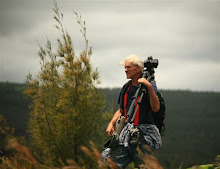
At 10:00 PM last night I stood on the Kalapana Gardens access road near the county viewing area and scanned the Pulama Pali, coastal flats and ocean entry for signs of surface lava activity. I saw no pronounced lava on the pali but there were a few small blobs of red here and there across the coastal flats, including a bit of a breakout off the end of the viewing area access road; the breakouts reported there the past few days have stagnated. The ocean entry had changed significantly from the nights before: there are now two main entry glows – a brighter one where it has been strongest this past week and a second glow far west of there, which would be at the end of the new lava that had advanced into that section of coastline a couple of weeks ago, but then had stopped. It may be on the move again. That said, both these ocean entry plume glows were very subdued compared with any previous night since the lava first found the ocean on July 25th. I took no photos of this.
Yesterday a number of people on the Puna side of the Big Island felt the small 3.8 earthquake located five miles west of Kalapana at a depth of six-miles.
Our Volcano Goddess Pele left a nice heartprint out on the coastal flats that I share with you here:











感覺很好的blog,祝你開心喔............................................................
ReplyDelete